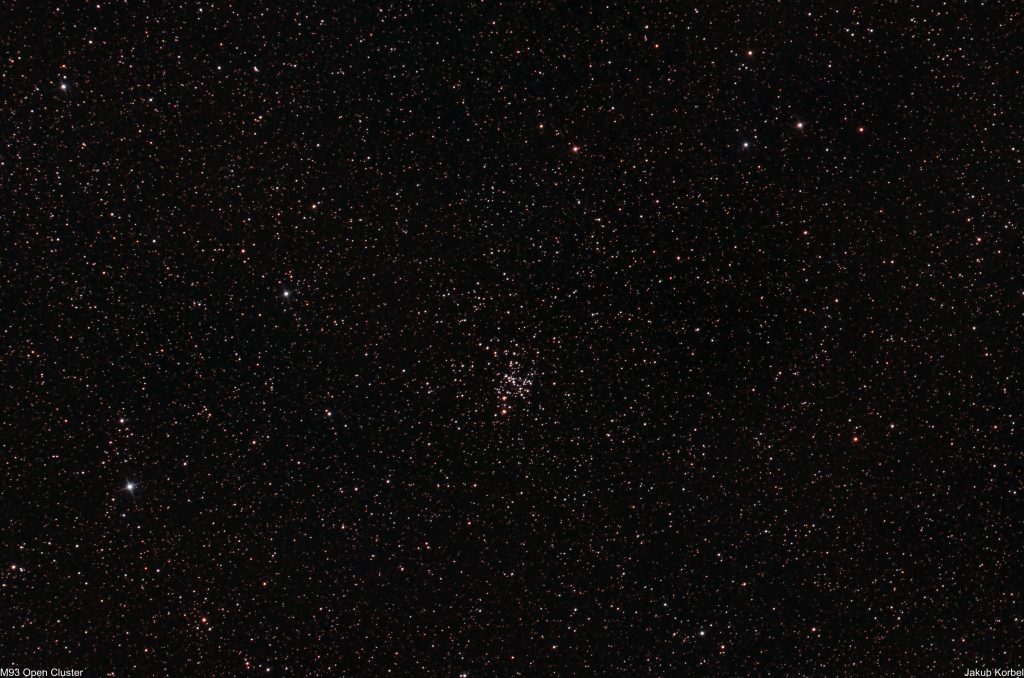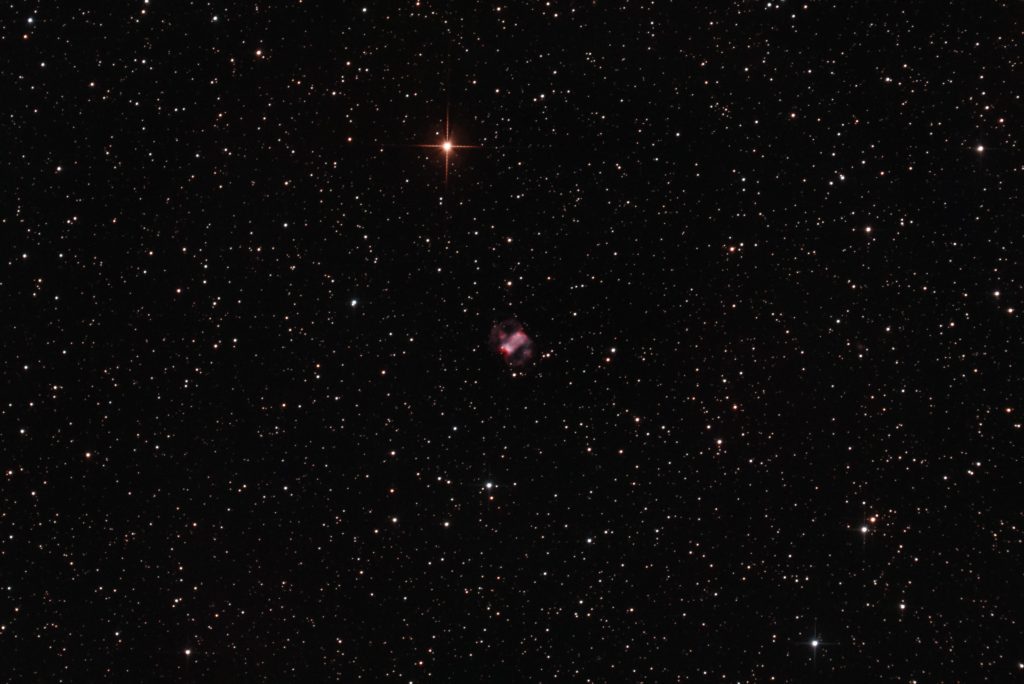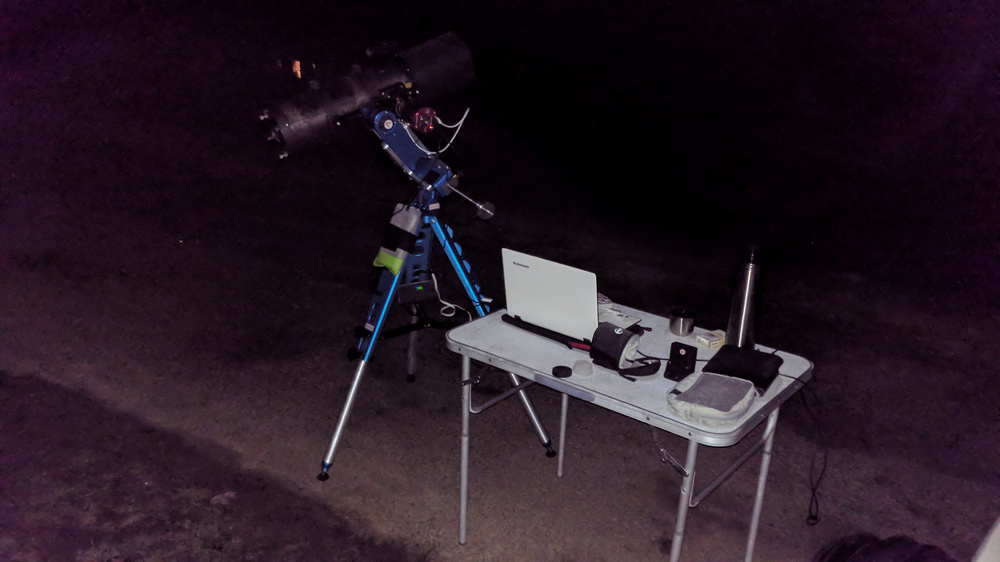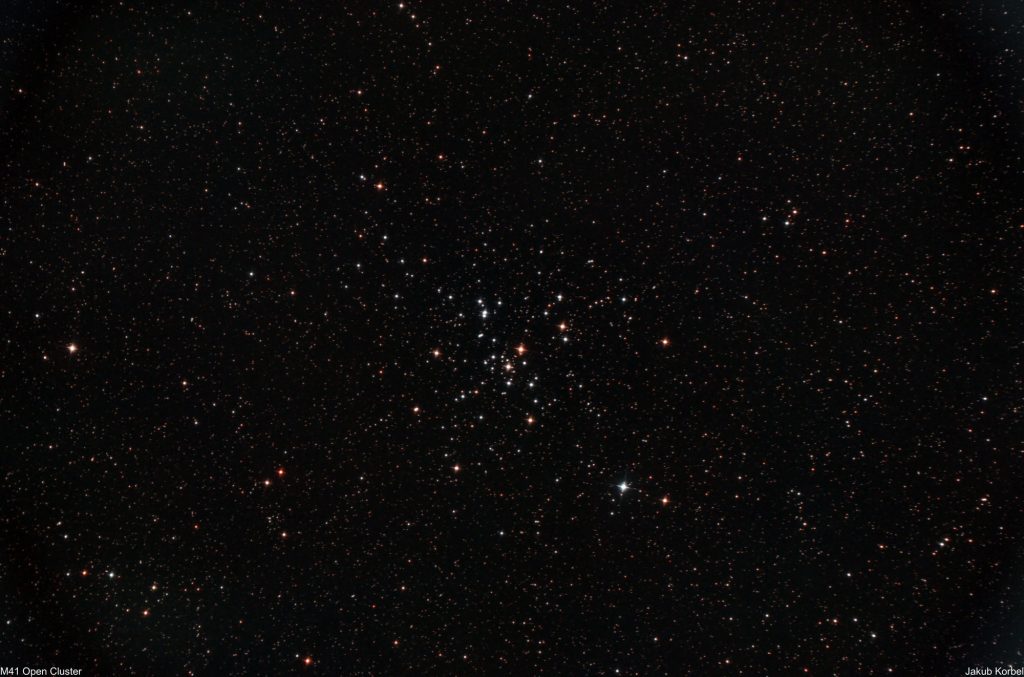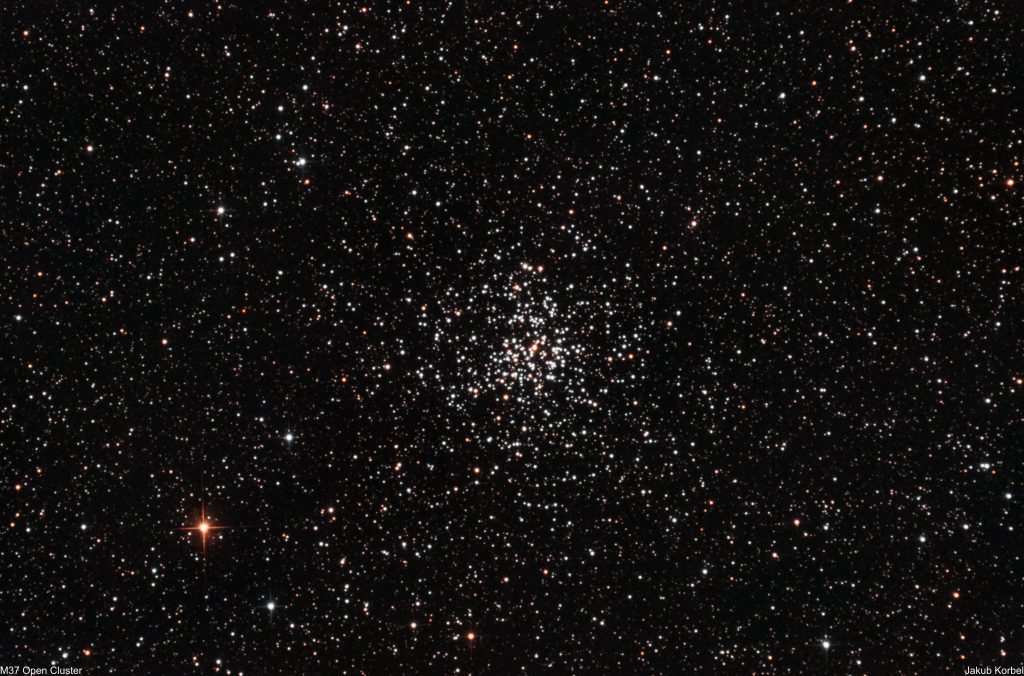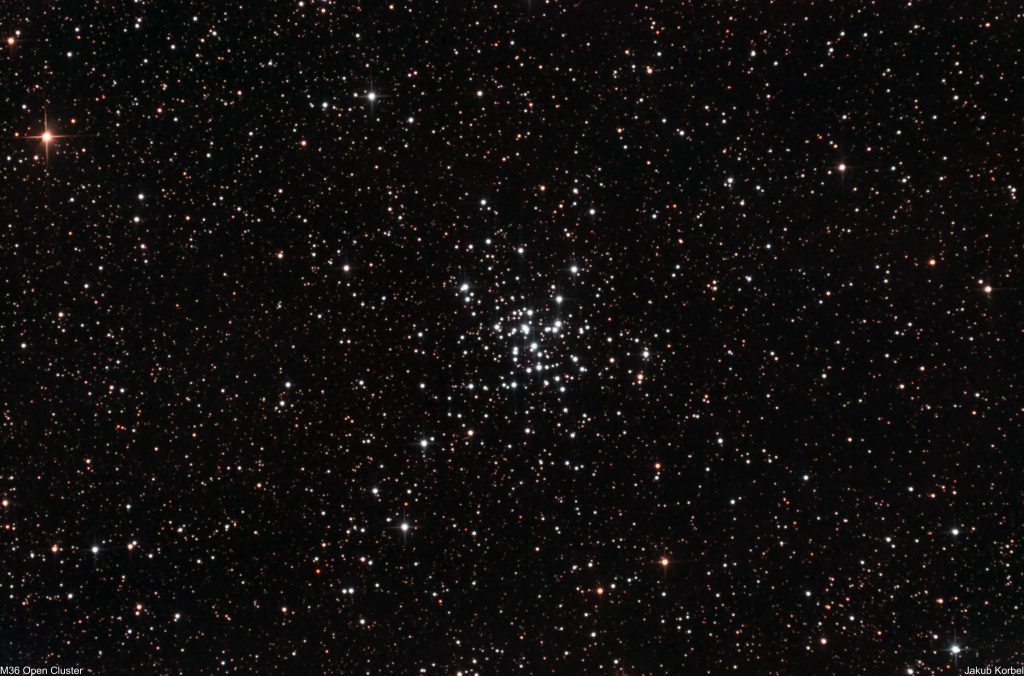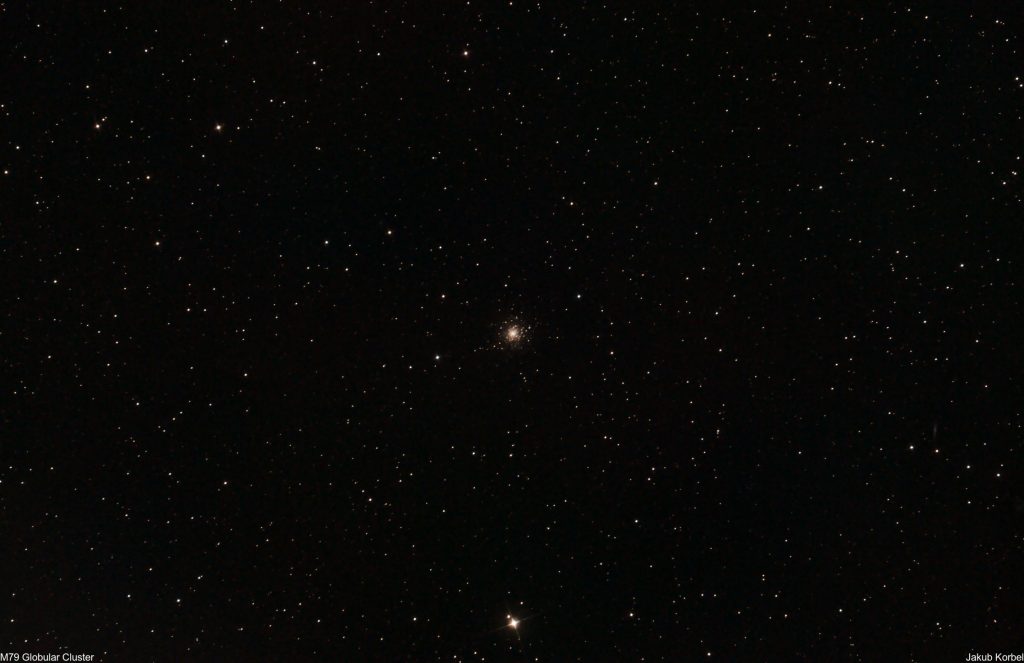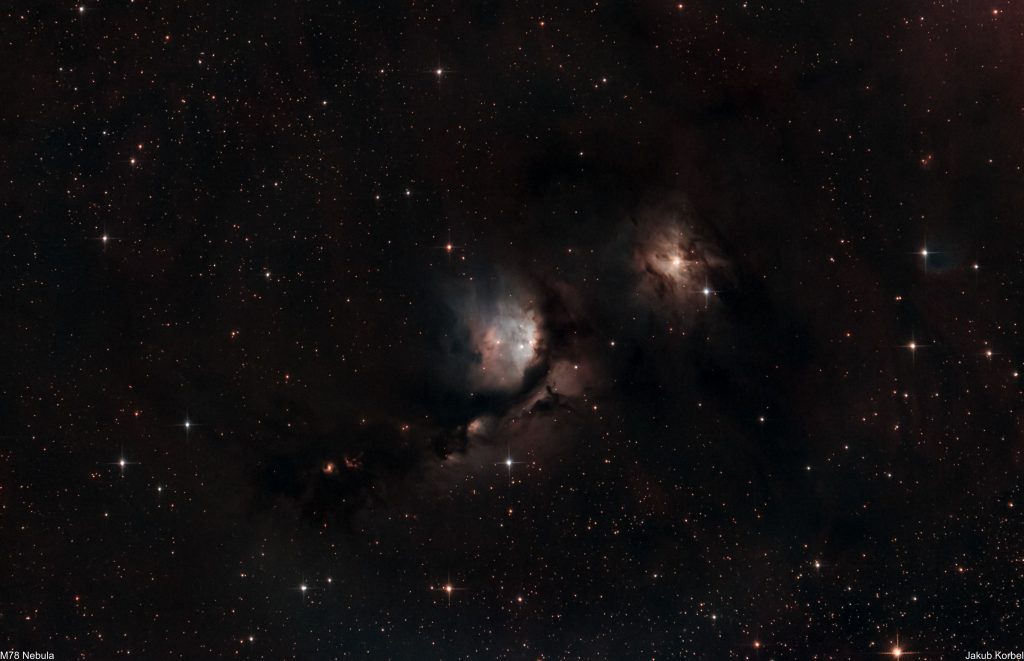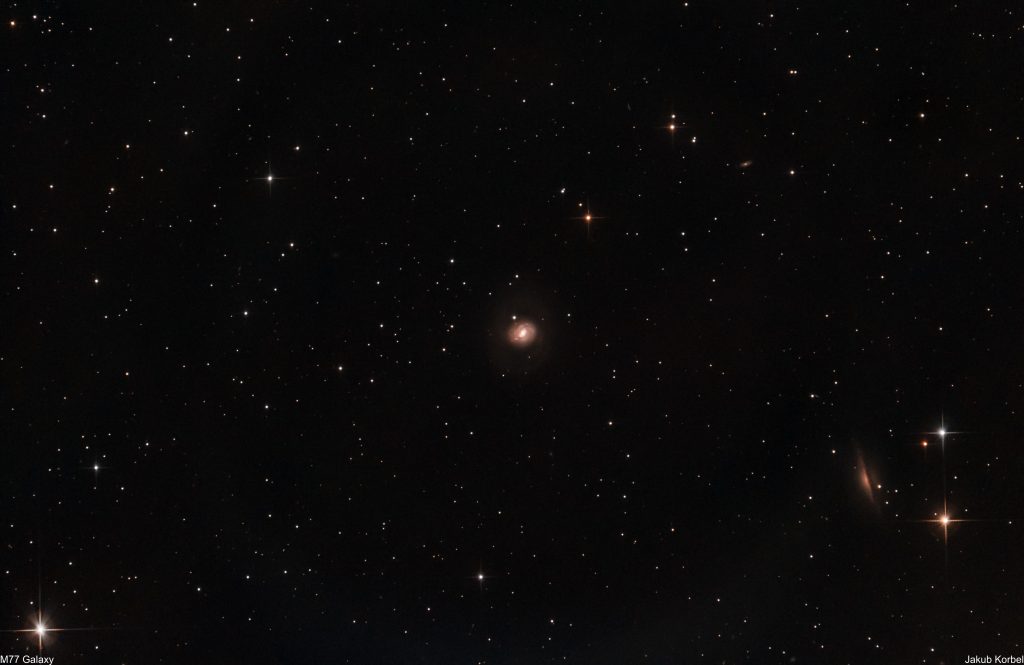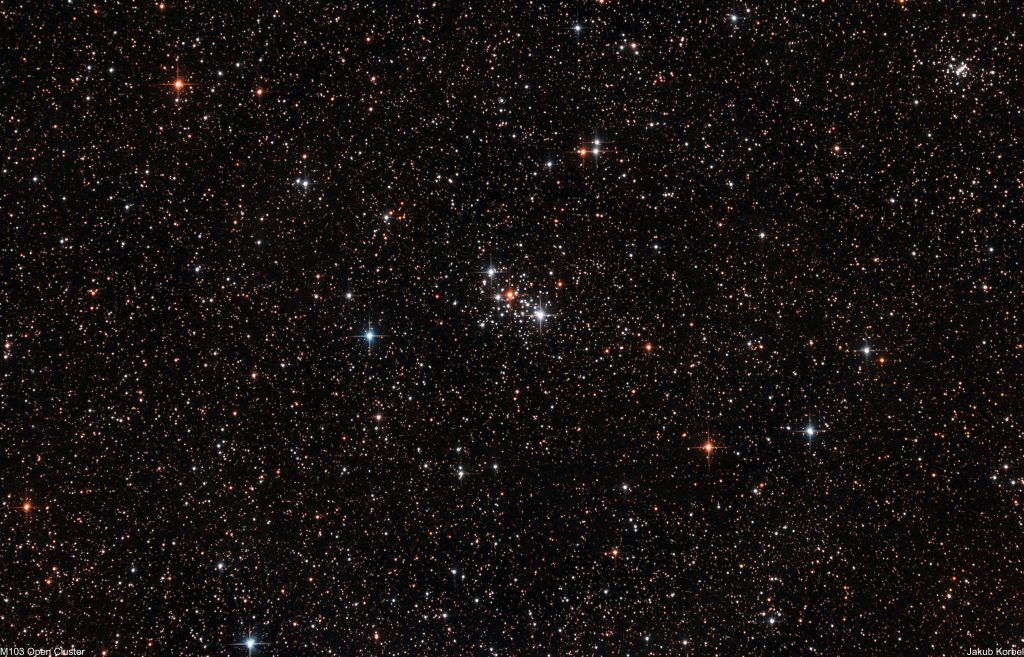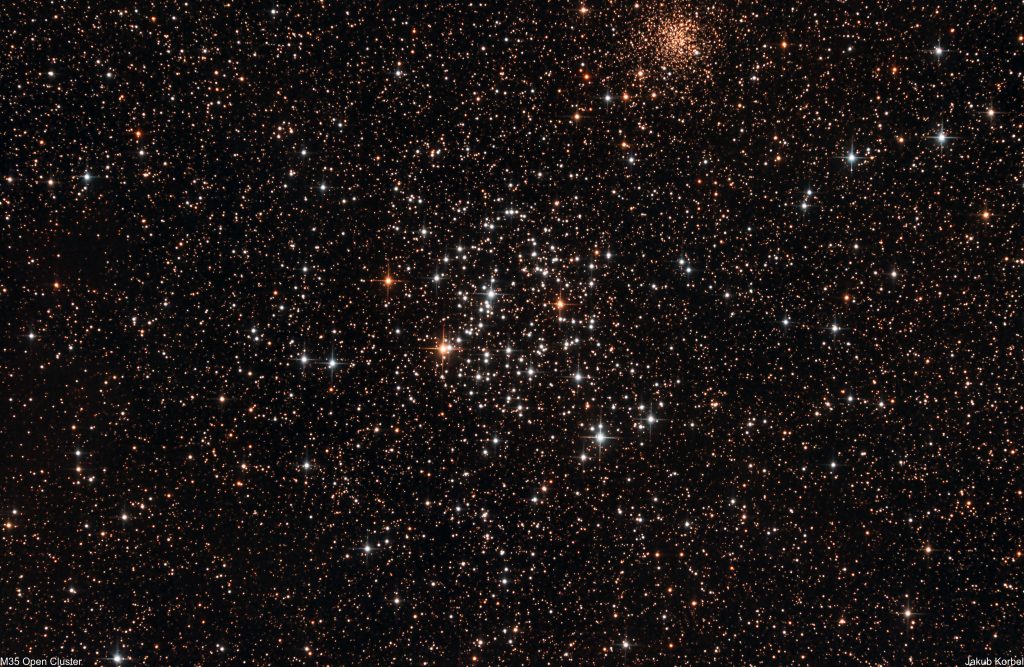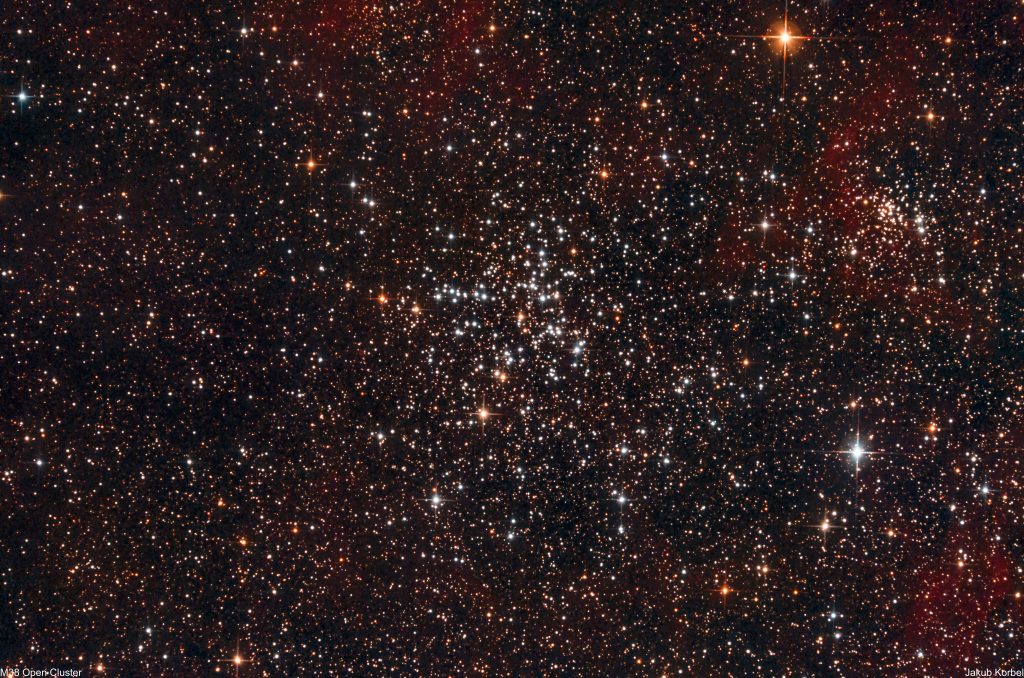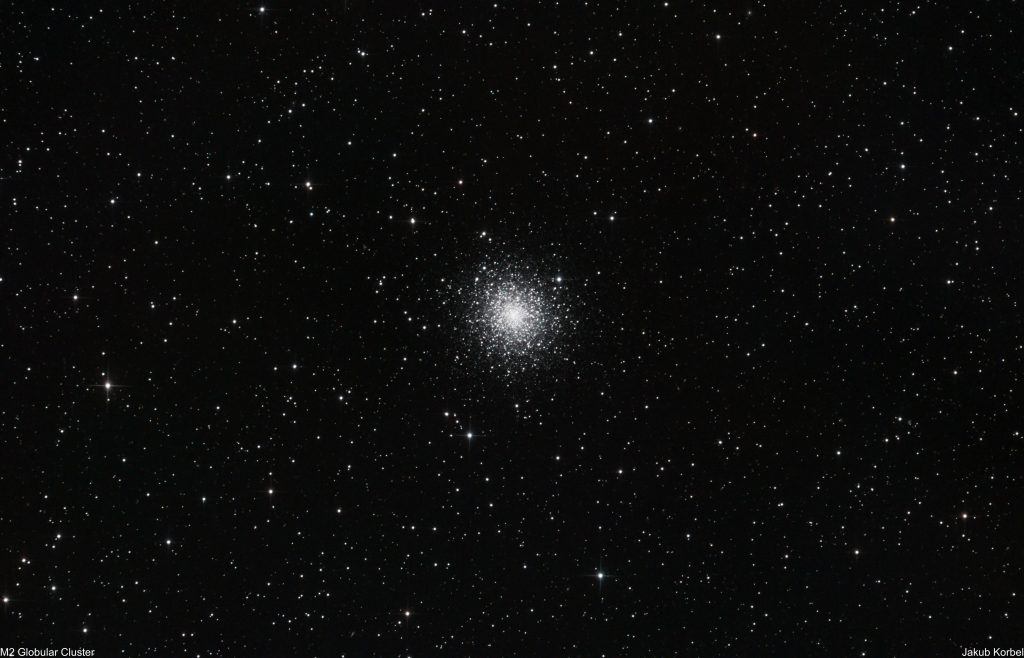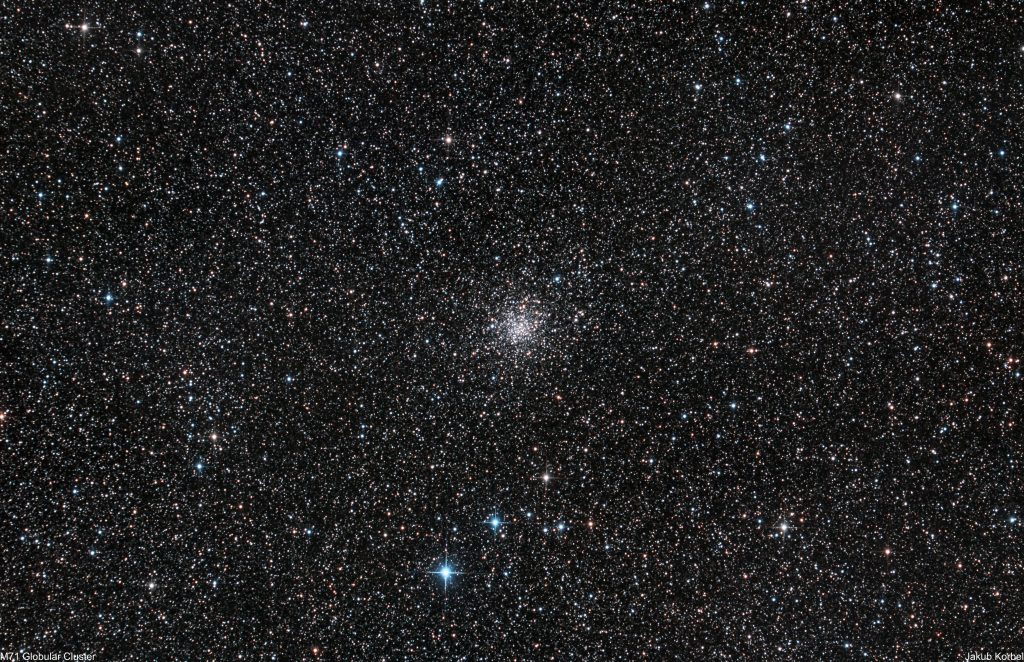The spring has arrived and there are many galaxies, which yet has to be captured by me, in order to finish the Messier catalogue. This night I managed to capture tree of them in one shot. Messier 58 (upper left side) is a barred spiral galaxy, which is approximately 68 million light-years from Earth. This makes it the furthest object from Messier catalogue. Messier 89 (bottom middle) is only 50 million light-years from us and Messier 90 (right) is approximately 59 million light-years away.
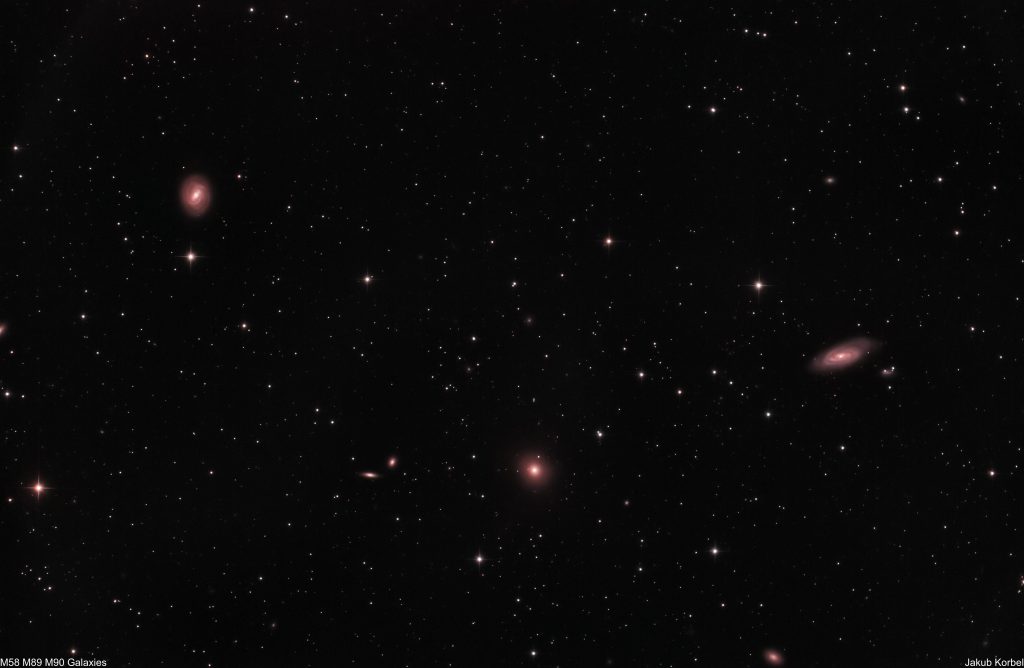
Technical details:
| Telescope | Newton 150/600 mm |
| Aperture | 150 mm |
| Focal length | 630 mm |
| Mount | Avalon M-Zero |
| Autoguiding | ZWO 174MM, Guidescope 30 mm |
| Camera | ZWO 071 Pro @-20°C |
| Corrector | Explore Scientific HR |
| Filters | Hutech IDAS LPS-D2 |
| Exposure | 90x180s, Gain 94, bin 1x1, |
| Date | 2019-03-29 |

